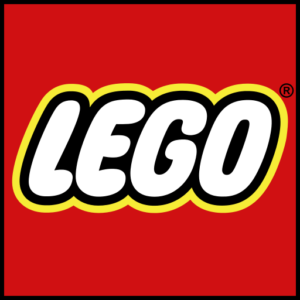Interview with the LEGO Ideas Design Team and fan designer of 21335 Motorised Lighthouse
 7
7

Now that the LEGO Ideas 21335 Motorised Lighthouse is now on sale, some of you might have already had the opportunity to put the set together, and marvel at one of the most unique LEGO sets yet.
I had the opportunity to interview the design team that worked on the LEGO Motorised Lighthouse, as well as fan designer Sandro Quattrini, so here’s some exclusive insights into the design process, where we manage to learn more about the development of the Fresnel Lens element, minifigure design inspiration, and how LEGO thinks about value for a set at this price point.
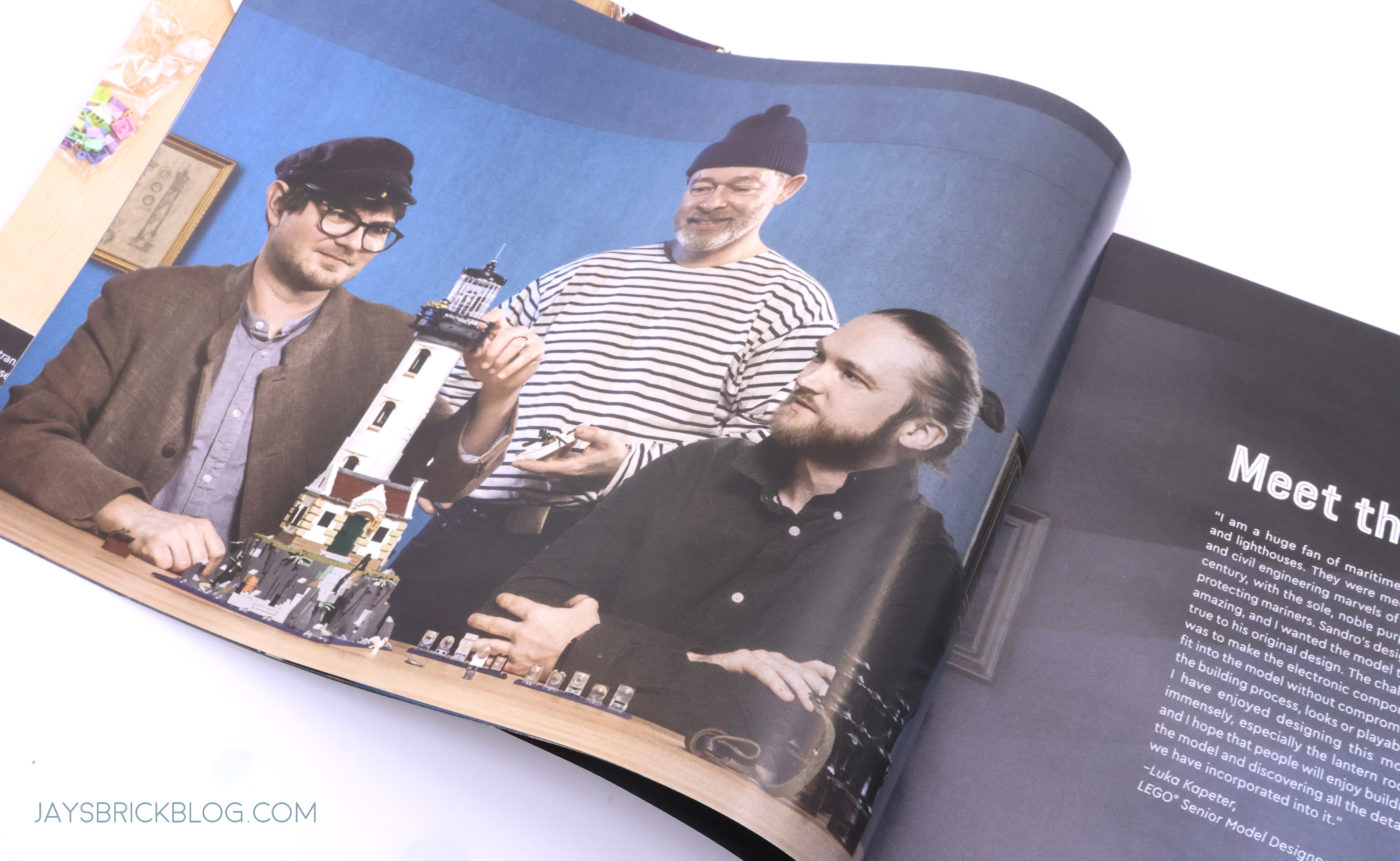
The interview roundtable consisted of Luka Kapeter, (Senior Model Designer), , Peter de Fine Licht (Senior Play Designer, Elements), Samuel Johnson (LEGO Ideas Design Manager at the time of development) and Sandro Quattrini (fan designer).
Joining me and contributing some of these questions were representatives from Blocks Magazine, and Tips & Bricks, so keep an eye out for their content as well. Some parts of the transcript have been edited for levity, but please enjoy this deep dive into the LEGO Motorised Lighthouse.
In case you missed it, check out my review of 21335 Motorised Lighthouse!
What inspired you to build a lighthouse?
Sandro: Well, the main source of inspiration was just my mother bugging me to build a lighthouse for years.
She absolutely loves them and it’s also a structure that’s been on my mind ever since I took a road trip with my family when I was ten years old around the Gaspé Peninsula in Quebec.
I’m just I’m just a huge fan of of standalone buildings and these lighthouses that evoke this sense of mystery. They are the most honourable structures because they exist only to serve.
Just that sense of isolation and cosiness that you can get from from a massive lighthouse or just a tiny little lighthouse hidden that’s been left to time and has been hidden by the woods. I wanted to capture that in the model.

Did you visit any particular lighthouse to get inspiration for this build?
Sandro: I didn’t visit any in particular. One of the lighthouses that stuck with me the most from the trip around the Gaspé Peninsula was the Pointe-au-Père Lighthouse in Rimouski , which was one of the first we visited and the tallest one we saw. I also drew inspiration from the Bell Rock Lighthouse, as well as other different lighthouses I found on Google Images that resembled the vibe I was trying to get.
Was there any one particular detail that you wanted to capture with the lighthouse?
Sandro: Mostly the size of the lighthouse – this big towering structure, because I loved to build it. It has to be the one that’s most imposing when you see it against other models in a room.
So just just the sheer size of the lighthouse, particularly in micro-scale with a tiny little house and this small rock island that can barely hold the tower.
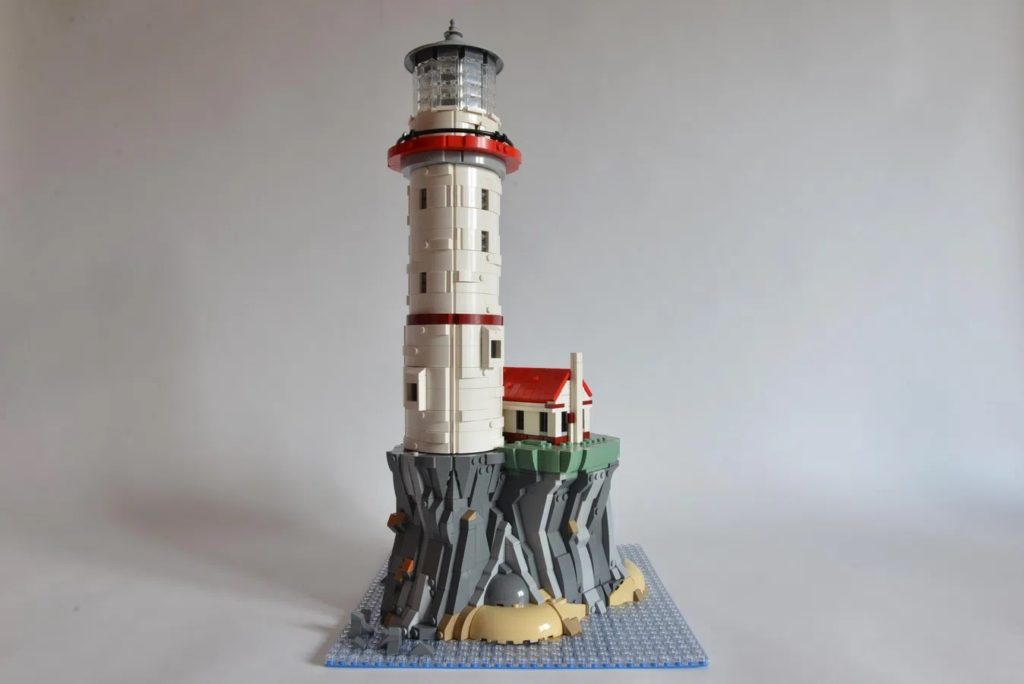
The original submission is more of a sculpture, so in terms of proportions, that was the most important aspect.
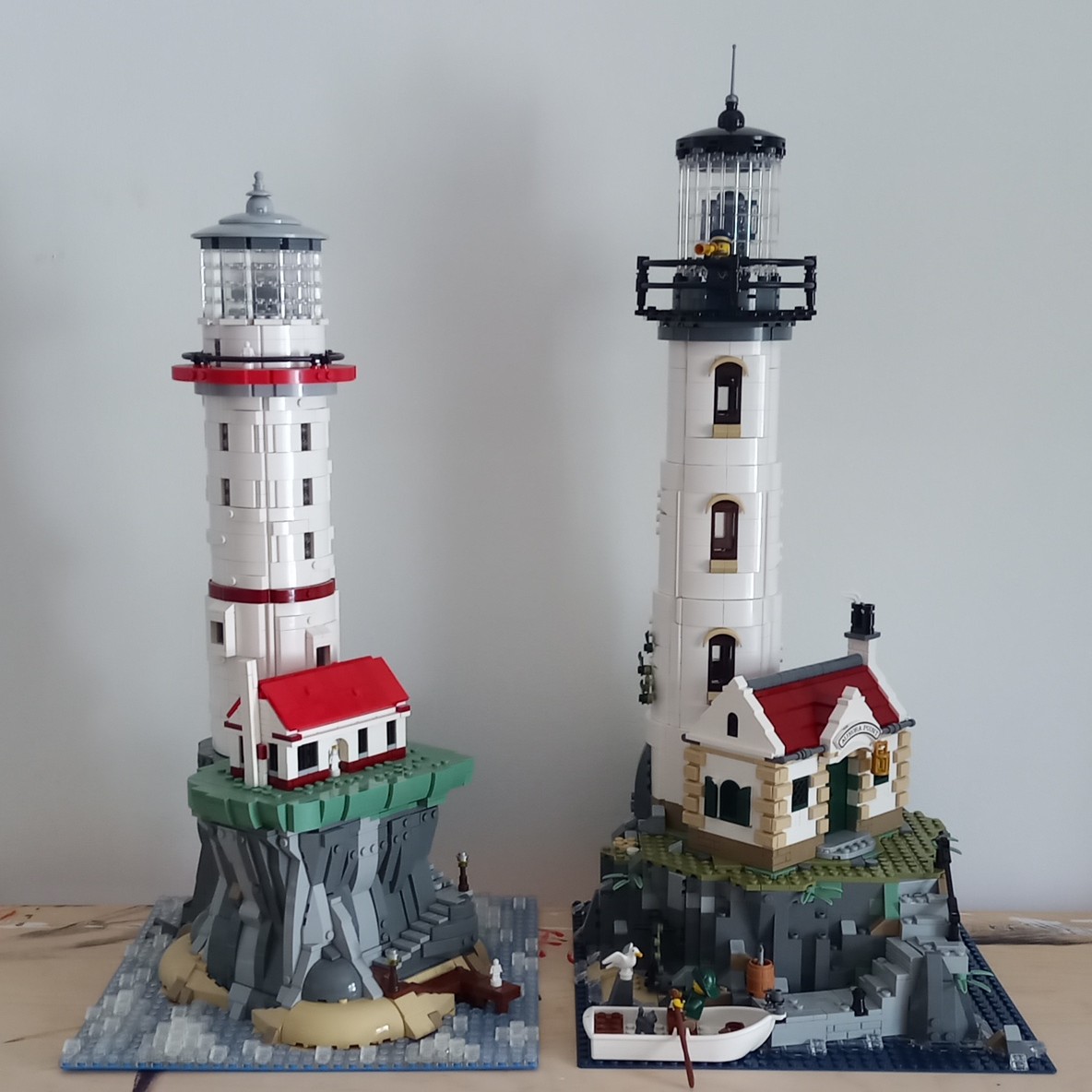
Why was the Lighthouse changed from micro-scale to minifigure scale?
Samuel Johnson: Quite early on that we had a lot of discussions about the scale especially with Sandro, because we wanted to make sure that everyone was happy with the decisions that we made.
We knew that this would be like a great addition to the landscapes and cityscapes that our fans were creating at home, so just adding this to your collection in minifigure-scale, we just knew it would be really great.
We also felt it would be a great follow up to some of the past sets that we’ve had from LEGO Ideas such as the Old Fishing Store and to continue that kind of aesthetic.
We could also include a couple of new exclusive characters as well.
Were there any specific characters referenced for the minifigures? What was it like designing them?
Luka: No, they’re quite generic, and didn’t reference the movie (The Lighthouse) – I’ve never seen the movie, and from the trailers, I felt it was too dark and would influence me in a bad way.
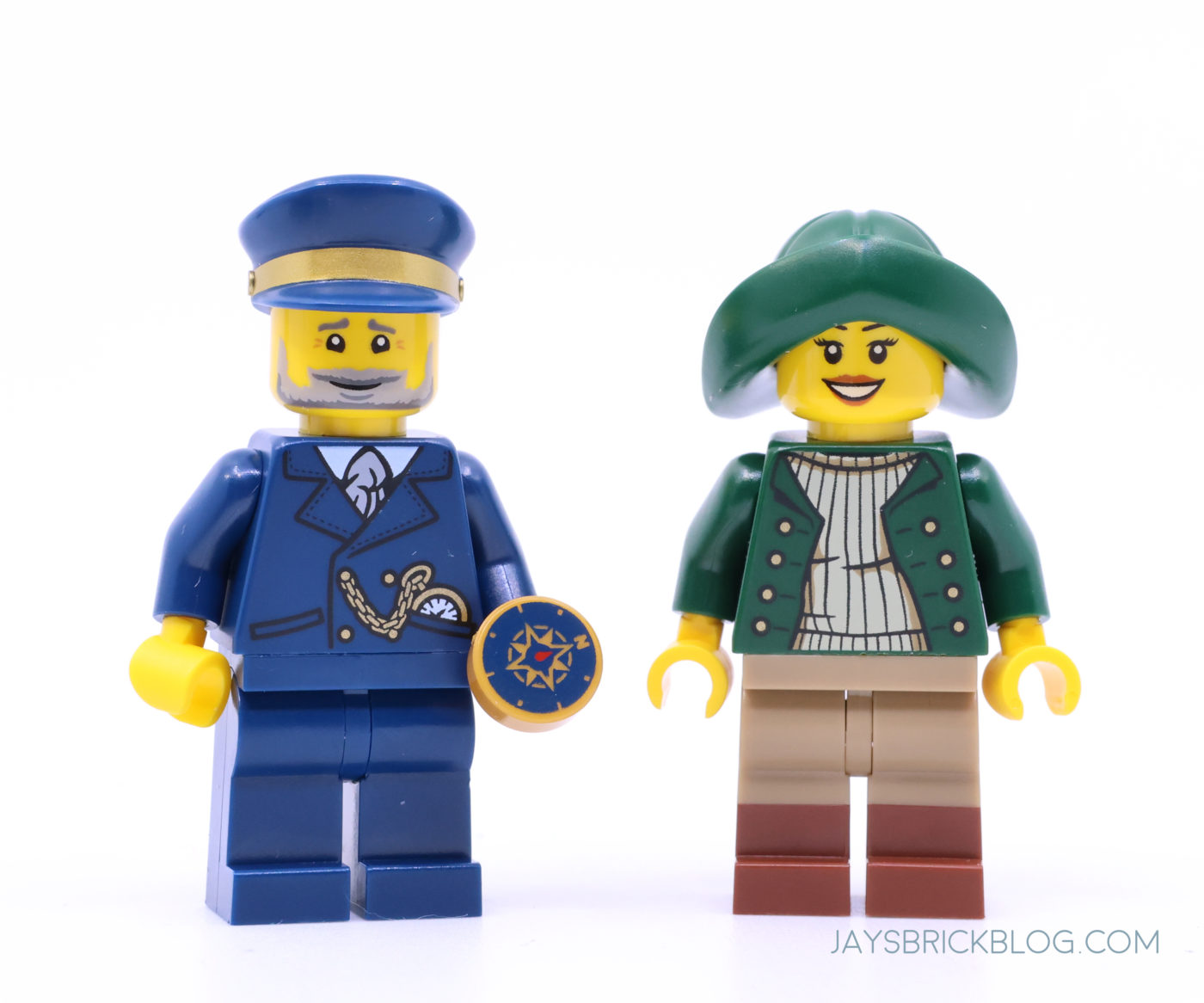
I think the lighthouse keeper in Dark Blue references the Danish uniform for lighthouse keepers in the 19th century. If I’m not mistaken, they’re completely dark blue with with a bit of gold.
The dark green outfits were my proposal to complement the whole colour scheme.
If you look at it, it’s about the patches of colours are distributed. You have a bit of dark green on the foliage and the windows, and what fits in that colour scheme was that dark green kind of rain suit.
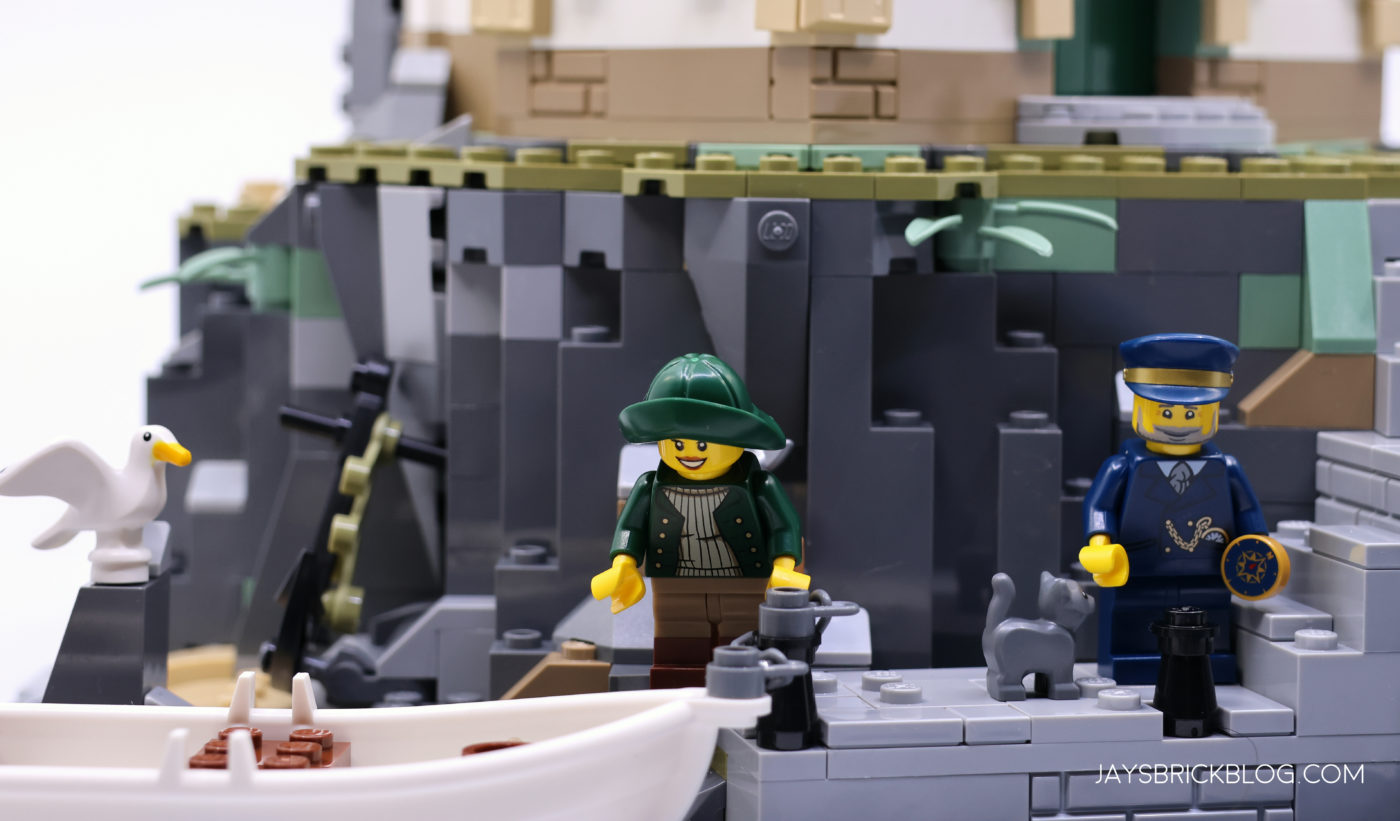
It’s also very appropriate 19th century kind of colour for the wardrobe.
Claus (the graphic designer) did a lot of exploration on how people were dressing, and we really wanted to place this in the 1850s, which at the time, lighthouses were state of the art technology and engineering.
Samuel Johnson: We also wanted the torsos to be reusable as well. We didn’t want them to be too feminine or too masculine, so you have the opportunity to maybe switch their roles over.

Were there any change to the colour scheme to fit in better with the Old Fishing Store aesthetic?
Luka Kapeter: No, I think the colour scheme is actually quite similar to to Sandro’s original proposal. I really tried to stay truthful to his idea in terms of general architecture and the essence of the proposal.
The only thing that we kind of changed was the colour of the water, because we didn’t want to tile the whole baseplate like Ninjago City.
We knew that we wanted to stay on a base plate, but we still wanted that dark water colour, so that’s why we changed the base plate from blue to dark blue, to get that moodiness and also create a sense of the Lighthouse being placed somewhere in the Northern Latitudes where the sea is cold, dark, and it’s kind of dangerous outside.
We even changed the botanical elements to sand green to keep to the same colour scheme for the environment in his original proposal.
We wanted to create a mood of where the Lighthouse is placed, where it’s dangerous on the outside, but also contrast that with the coziness of the cabin inside.

Why is the rowboat called Leda?
Luka: This one has a personal connection to me, but I like to think that it can be an abbreviation of LEGO and Denmark. It doesn’t have any real-world significance, and it’s for people to interpret.
Who were you thinking of as the target audience for this set?
Samuel Johnson: It’s primarily aimed at adults as our target audience, but, we we do include things like the row boat , which you could consider a play starter.
So if you have a kid at home, you can say “hey, you can play with this while I build the set”,
I would like to think that most of this is built for Luka’s childhood. A lot of our references for the set were things that myself, Luka and Sandro would have grown up with.
There’s secrets like a little treasure chest, which maybe references the classic Pirates, as well as throwbacks to legendary LEGO sets.
Luka: There’s a lot that will appeal to children or AFOLs, like just building on a base plate.
When you build this Lighthouse, it’s a very old school way of building because you’re just building on a 32×32.

We also included animals, that make it more relatable. The little kitten brings so much life to the set, kind of like a storybook. Just like old LEGO sets, you didn’t always have a backstory – but you had to imagine it yourself.
It’s the same here because it’s not an IP (intellectual property) set, where the story is not written and the story is not told, so you can come up with your own story.
We included little elements to help people try to flesh out the background of the girl in the boat, who is she, why does she have a cat, where is she doing. These are story-starters that can appeal to your inner-child.
Sandro, how involved were you in the design process?
Sandro: In our very first meeting I came ready with this whole list of things that I was worried about for the lighthouse.
Upscaling it, making it minifigure-scale wold be awesome, the colours, the sound of the motor, making it easier to activate which were all key concerns to me.
I was glad because we came in with the same ideas and solutions. I pushed hard for texturing of the rocks beneath the tower – one of the earlier drafts felt too smooth on the sides.
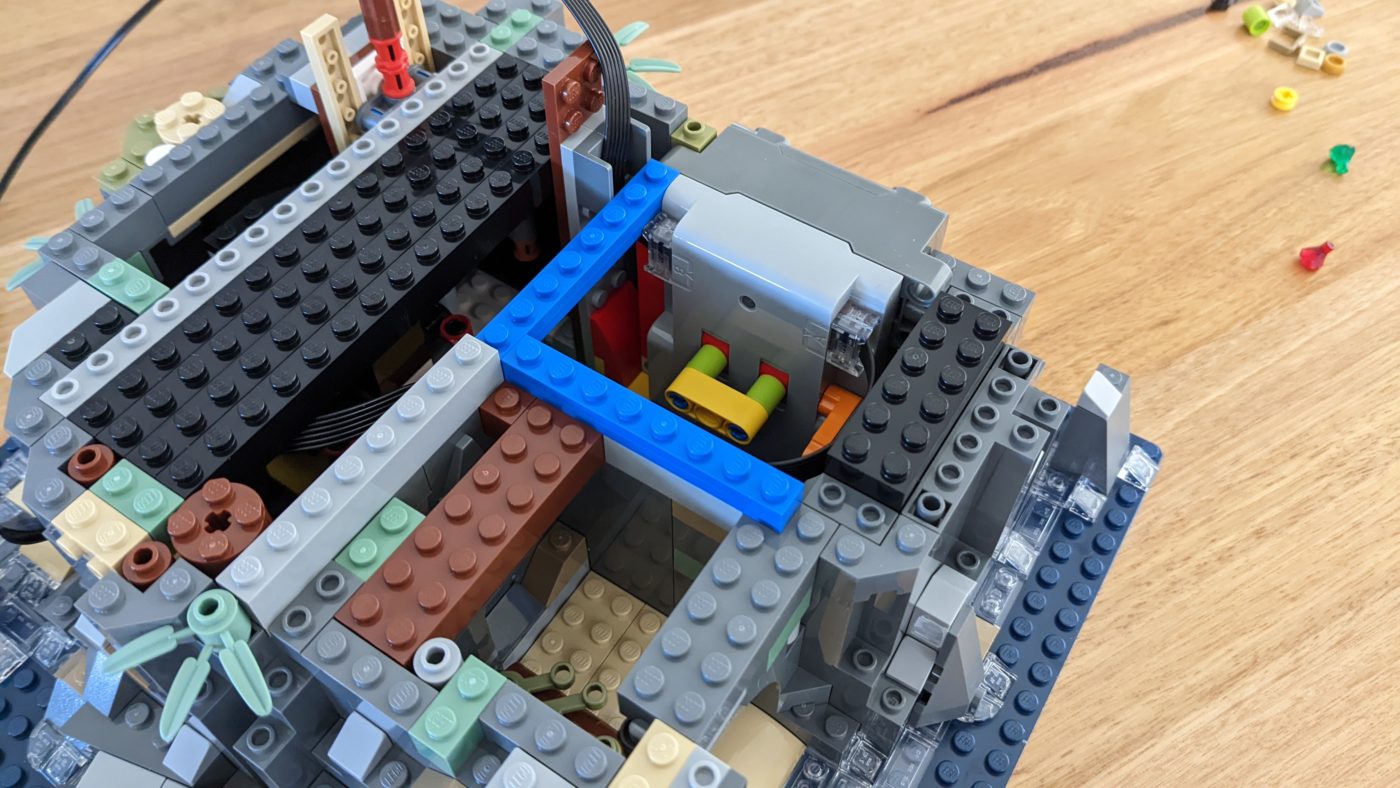
I was really happy with the design process. One thing I was concerned about, that I pointed out to Sam and Luka, was the sound the motor was going to make. In the original, having it run in the room was kind of like having a steam engine chugging away.
It made a lot of noise and the motor was just vibrating away. My grandfather offered some ideas, maybe they can open the motor and add some oil in it but I didn’t think that was a legal technique!
One of my favourite features of the Lighthouse, which I discovered, was the way Luka and Sam figured out how to minimise the vibration and noise, which was to have the motor float slightly on a platform, and use these little rubber elements to absorb the vibrations.
I was really glad the designers took that comment to heart, and see the solution applied in the final product.
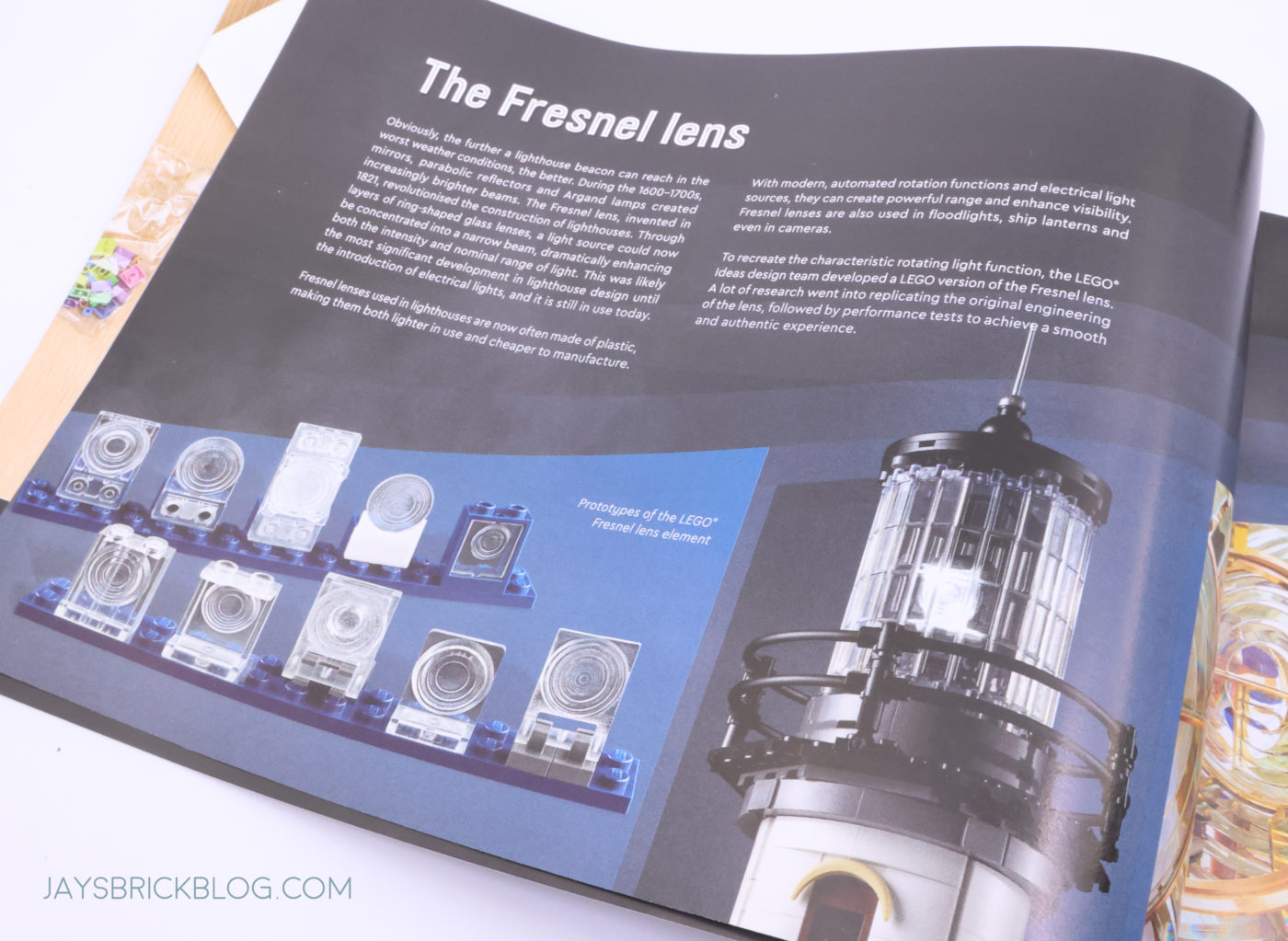
What was the development process like with the Fresnel Lens element? How did you guys pull it off?
Peter: First of all, we made a lot of prototypes, in different orientations and different ways of fitting it into the System – horizontal, vertical, whatever.
The constraints of the Lighthouse were that the lens needed to fit into the mechanism, and it needs to look really nice, so we wanted that lens to be as big and visible as possible.
As the light goes through it, we really wanted those concentric rings to be visible.
We wanted to make it as big as we could, while still being constrained by size, and also keep in mind that this might be used in other places in the future, so we also wanted to make it look as generic as we can so that it can be something else. It is essentially a decorative element.
This means that the decorative part of the element was also the functional part, which means that any small change we made will change how it directs the light.
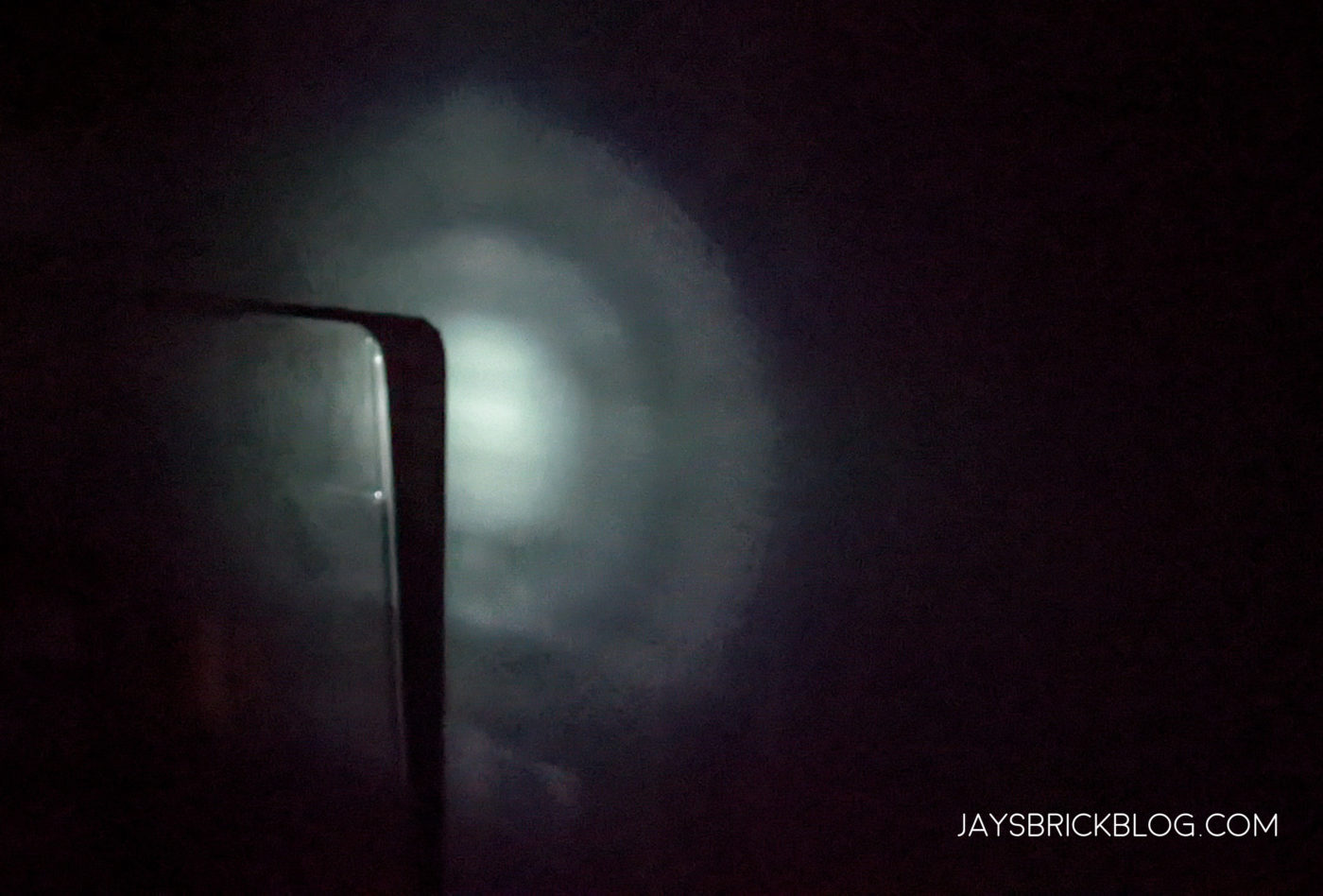
So we had lots of different prototypes, to get precisely the right effect with the light and in the end it might not make the perfect beam but it really extends the accent, to make those concentric rings which are iconic to me.
Luka: Can I also add, in the first few prototypes, we were actually using a magnifying glass as a lens, and after reading and watching a lot of videos about lighthouses, we felt that we weren’t doing justice to the lighthouse, even though technically it works as its supposed to, but it didn’t look appropriate.
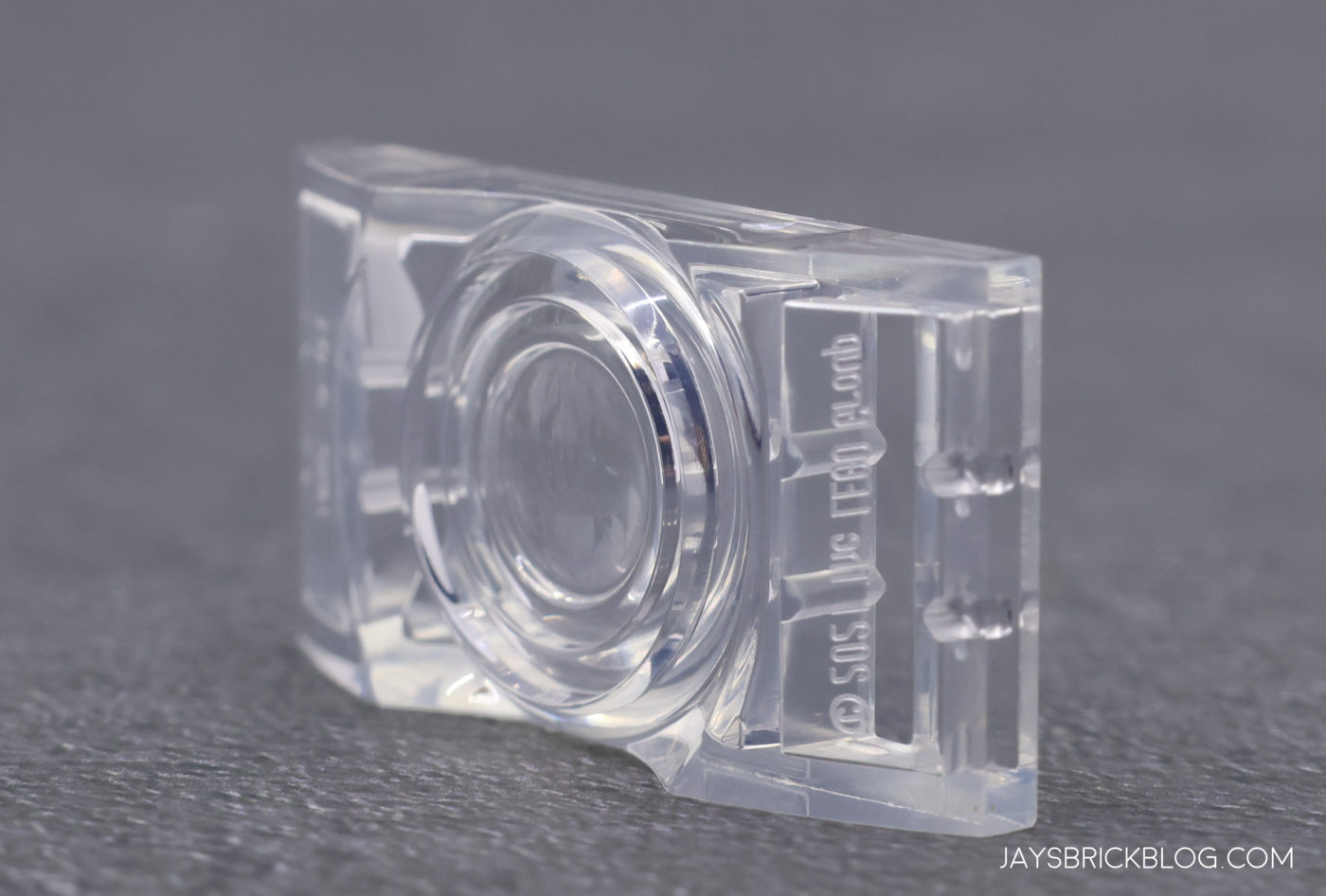
Peter was also not originally involved but because he was already working on a similar kind of lens element for Boost, and it so happened that what he was working on worked perfectly for the Lighthouse.
Samuel Johnson: It was also tricky because we had to have it safety tested and everything because we’ve never focused the lights on anything. It’s actually very, very rare that we use the LED lights at all.
So we’re making this accent piece that can focus the light, and so it’s been through quite rigorous testing.
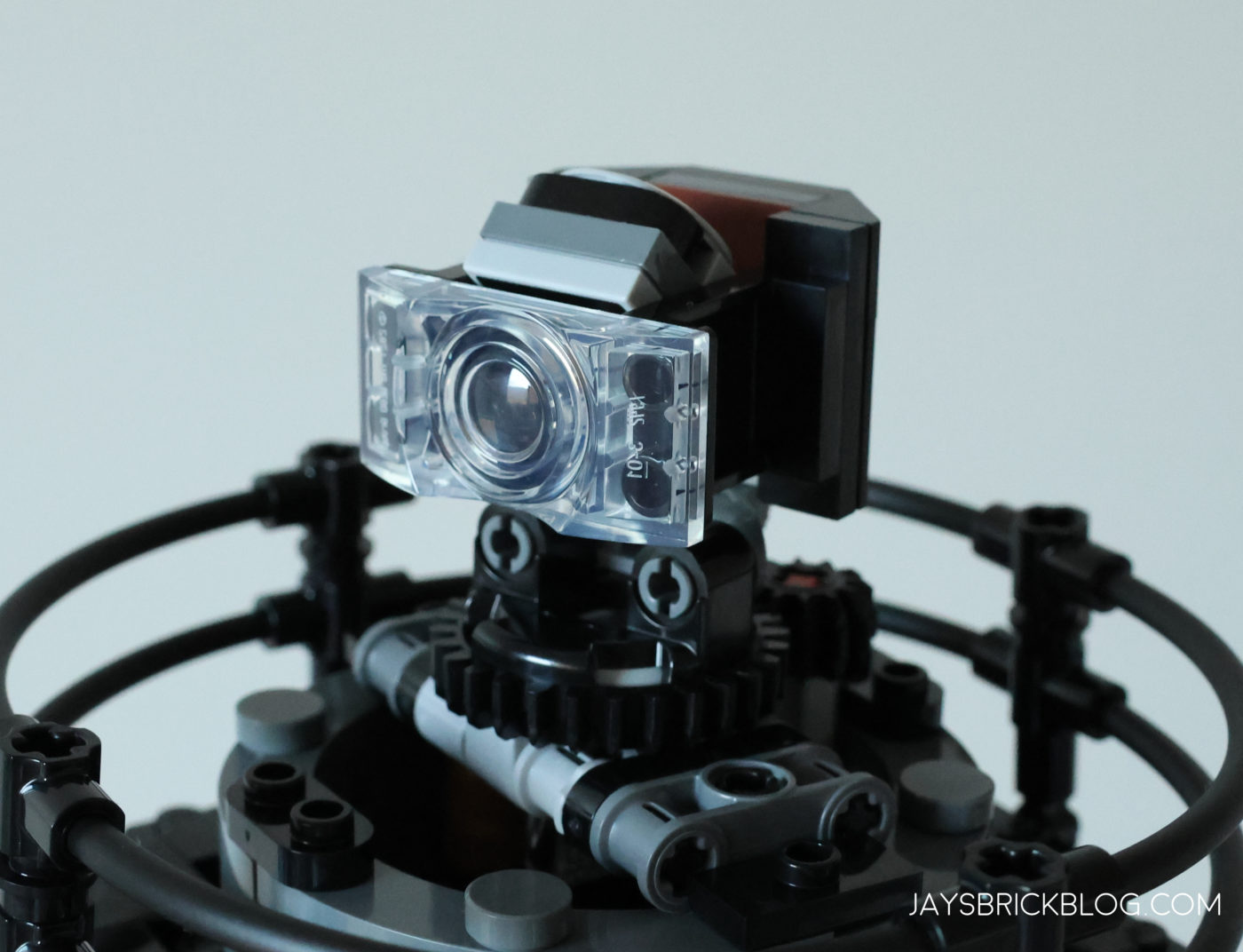
Luka: It’s not really normal that we can create a functional element in such a short development time, so this really pushed everyone, including engineering and element design which we crammed into one year, but everyone felt that we really needed a fresnel lens because every lighthouse needs one, and there was no other option.
The Motorised Lighthouse is currently tied as the second most expensive LEGO Ideas set yet. How did you ensure that fans got what they’re expected to pay for what is perceived as a very expensive set?
Samuel Johnson: The electronic parts that LEGO produces are the most expensive elements that we make, and if we want to make a great building experience, we need the bricks as well.
If we had cut the price of this set down, to say $50, all you’re going to get is the light, instead of the lighthouse! *chuckles*
We actually went back and forth, between myself, Luka and our Marketing Lead about what was the value we wanted to offer people. If someone’s going to invest in a LEGO set, we want to give them what they deserve and this is just one of those sets where we really wanted to deliver that.
We had that opportunity to put some kind of real luxury stuff in the set, (like the dark blue baseplate), and we went all out. Sandro created this awesome looking Motorised Lighthouse – it’s in the name, so we couldn’t do an un-motorised lighthouse.
We wanted to give those 10,000 people that voted for it, plus say, the other 400,000 people that might buy the set an authentic lighthouse experience, with a rotating light on it, a first for LEGO lighthouses.
It’s a bit like the Old Fishing Store, where we put everything into that set, and with this set, we really wanted to give as much as possible, and stay true to Sandro’s creation.
From the design process, Luka started out with figuring out how to motorise this structure, then we explored the Light Brick, we explored counterweights that could create some crazy functionality to see what was actually possible.
For someone who wanted to put it on display, and run it for a long time, the battery pack was perfect for that, and I believe this is only the second set that the battery pack appears in – the first was a Technic set.
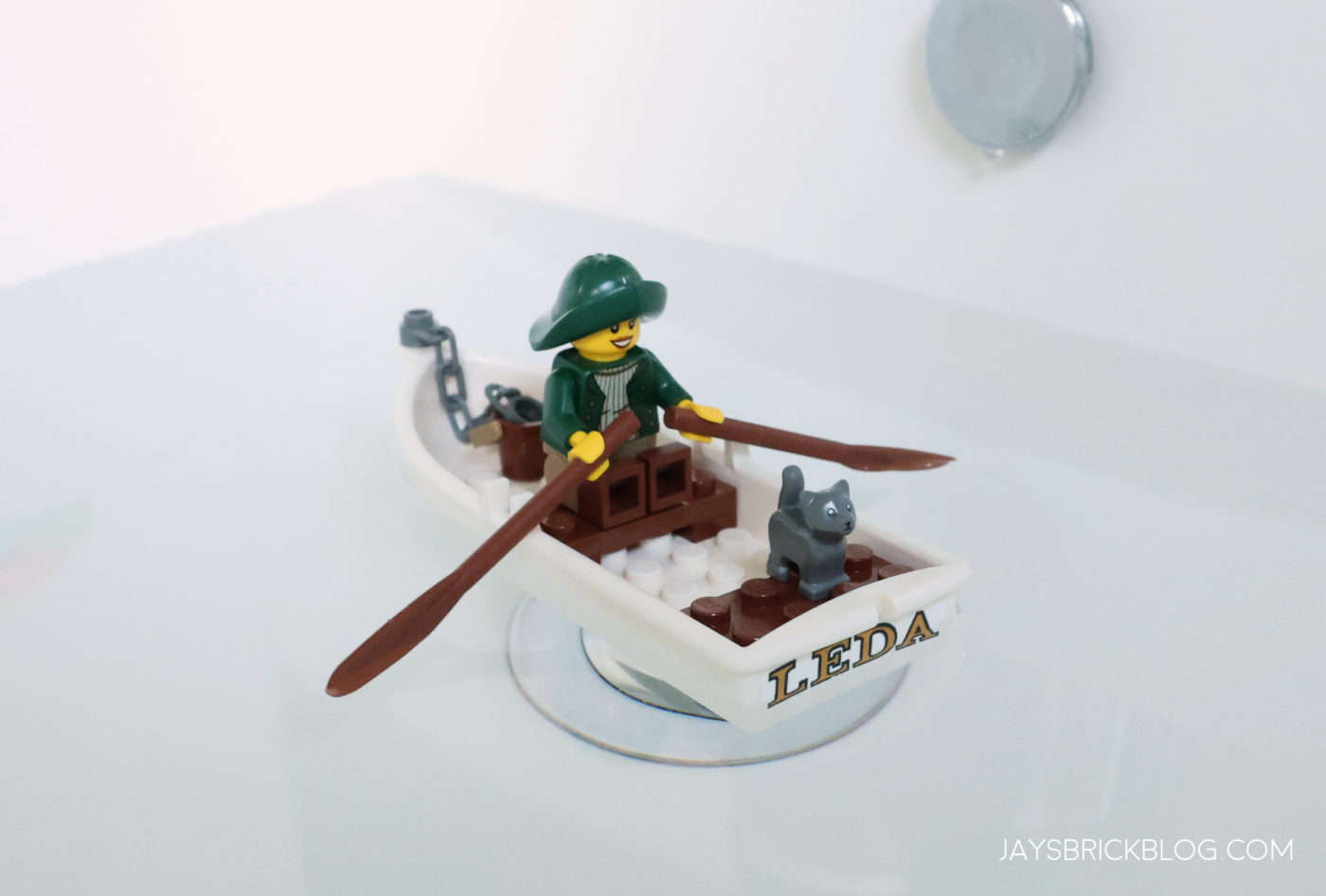
Why does it say the boat does not float when the rowboat clearly floats?
Samuel Johnson: *chuckles*. That is because we cannot promise that it will float because we added extra elements to it, so we don’t want to over-promise! It even has that on the Ship in a Bottle set, even though there’s no water, and it’s in a bottle!
Thanks so much for reading this interview with the LEGO Design Team and Sandro Quattrini. Special thanks to the LEGO Ambassador Network for facilitating this roundtable interview.
21335 Motorized Lighthouse is now available LEGO.com or from your local LEGO Store. Check out my review or watch this Speed Build video to see it come together
To get the latest LEGO news and LEGO Reviews straight in your inbox, subscribe via email, or you can also follow on Google News, or socials on Facebook, Instagram (@jayong28), Twitter or subscribe to the Jay’s Brick Blog Youtube channel.





